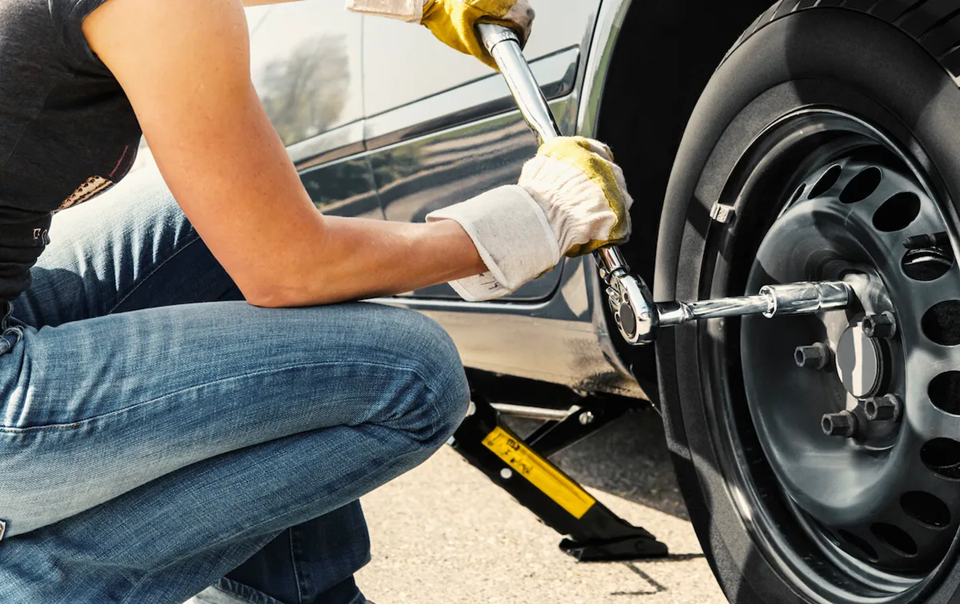
I. Introduction and Definition
A torque wrench is a tool designed to apply a precise amount of torque (rotational force) to bolts, screws, or connecting components. The purpose of this tool is to ensure that joints are fastened to the optimal tightness—neither too loose nor too tight—thereby minimizing the risks of damage, equipment wear, or technical failures. Using the correct torque not only affects the performance of the product but also determines the overall safety of the connection system.
II. Operating Principle
A torque wrench operates based on the principle of torque measurement—that is, the output rotational force applied to a fixed point. This mechanism can be implemented using various types of sensors:
-
Mechanical Mechanism: Utilizes a dial gauge (beam) or a spring mechanism that converts the applied rotational force into a measurable mechanical deflection, often accompanied by an audible “click” when the preset value is reached.
-
Digital Mechanism: Employs electronic sensors and processors to accurately measure and display the torque on a digital screen.
-
Wireless Connectivity System: Modern models integrate the ability to transmit data to a central control unit, enabling real-time monitoring of the tightening process.
The calibration process involves comparing the measured value with a standard reference value and making adjustments when necessary to ensure the tool’s accuracy over time.
III. Classification of Torque Wrenches
There are various types of torque wrenches, classified according to their construction and operating mechanisms:
-
Fixed Torque Wrench:
-
Characteristics: Features a simple design with a fixed torque value and does not permit adjustment.
-
Applications: Suitable for tasks that require a consistent torque, commonly found in mass-production assembly.
-
Pros and Cons: Offers high durability and uniform performance, but lacks flexibility when adjustments to the torque level are needed.
-
-
Adjustable Torque Wrench: This is the most widely used type due to its versatility and ability to adjust the torque according to specific job requirements. The main types include:
-
Click Type:
-
When the applied torque reaches the preset value, a “click” mechanism (accompanied by tactile or audible feedback) alerts the user.
-
Advantages: Easy to use and minimizes the risk of over-tightening.
-
-
Dial (Analog Gauge) Type:
-
Utilizes an analog dial with a pointer, allowing the user to monitor the torque value in real time.
-
Advantages: Provides a continuous and accurate reading, ideal for applications that require strict control.
-
-
Digital Torque Wrench:
-
Equipped with digital sensors and a display, and sometimes integrated with wireless connectivity to transmit data to a management center.
-
Advantages: Offers high accuracy and facilitates easy recording and storage of data for quality control processes.
-
-
-
Other Specialized Types:
-
Semi-automatic: Some modern torque wrenches incorporate an auto-adjustment mechanism for use in automated production lines, increasing efficiency and reducing errors due to manual operation.
-
Wireless Torque Wrench: Enables real-time data transmission, supporting remote monitoring during assembly and maintenance operations.
-
IV. Structure and Technical Components
A typical torque wrench comprises the following key components:
-
Adjustment Mechanism: This component allows the user to set the desired torque level. It may be based on a mechanical system (rotational or spring mechanism) or a digital (electronic) system.
-
Measurement System:
-
In mechanical designs, a dial gauge (beam) or spring assembly converts the applied force into a specific numeric reading.
-
In digital designs, sensors are used to accurately measure and display the torque value.
-
-
Construction Material: Most torque wrenches are manufactured from high-grade alloy steel to ensure strength and durability over time—an essential factor for applications that require high precision.
V. Calibration Process and Torque Measurement Principle
To ensure safety and precision during use, torque wrenches must be periodically calibrated according to international technical standards. This process includes:
-
Comparison with Standard Values: The tool is tested in specialized calibration equipment to verify its accuracy.
-
Adjustment of the Measurement Mechanism (if necessary): Any discrepancies are corrected by adjusting the mechanism or replacing components that have worn out.
-
Recording and Data Storage: This step supports ongoing monitoring of the tool’s performance over time, ensuring reliable operation in all applications.
VI. Industrial Applications
Torque wrenches are extensively used in various industries because the precision in fastening connections directly impacts the performance and safety of the entire system:
-
Automotive: Ensures that engine components, braking systems, and chassis are fastened to the correct torque to prevent malfunction and accidents.
-
Construction and Mechanical Engineering: Used in the assembly of machinery, steel casting, and critical construction projects to maintain structural stability and durability.
-
Aerospace: In the aerospace sector, where safety standards are exceedingly stringent, torque wrenches ensure that every component is secured according to international standards.
-
Automated Production Lines: The application of digital torque wrenches with data-recording capabilities assists in quality control during real-time production processes.
VII. Operating Instructions and Maintenance
1. Operating Procedures
-
Before Use:
-
Verify that the torque wrench has been correctly calibrated.
-
Select the appropriate measurement unit (e.g., N·m, ft-lbs, etc.).
-
-
During Operation:
-
Adjust the torque level according to the specified technical requirements.
-
Gradually apply force and be attentive to the “click” feedback or monitor the display if using a digital model.
-
Stop applying additional force once the preset torque value is reached to avoid over-tightening.
-
-
After Use:
-
Reset the tool to its initial position to maintain its calibration for future use.
-
2. Maintenance and Periodic Inspections
-
Cleaning: Wipe the tool after each use to remove dirt and grease, thereby preserving the accuracy of the sensor or spring mechanism.
-
Storage: Store the tool in its protective case, avoiding humid environments or excessive temperatures.
-
Periodic Calibration: Submit the tool to a professional calibration center as recommended by the manufacturer to ensure continuous accuracy.
VIII. Considerations When Purchasing
When selecting a torque wrench, the following factors should be considered:
-
Accuracy and Torque Range: Choose a tool with a measurement range that meets your specific application requirements.
-
Quality and Construction Material: Prioritize products made from durable, wear-resistant alloy steel from reputable brands.
-
Additional Features: Features such as an easy-to-read display, audible/tactile “click” feedback upon reaching the torque threshold, or integrated wireless technology are significant advantages.
-
Warranty and Calibration Services: Products offered with periodic calibration services help extend the tool's lifespan and sustain measurement accuracy.
IX. Technological Trends and Developments
In the modern industrial context, torque wrenches are continuously evolving with several key trends:
-
Integration of Electronic Sensors and Wireless Connectivity: This advancement facilitates automatic and precise monitoring of the tightening process, while also enabling data storage for quality control purposes.
-
Compact Design for Easy Integration into Automated Production Lines: Modern torque wrenches are engineered to seamlessly fit into automated manufacturing processes, thereby reducing errors associated with manual operation.
-
Adherence to International Calibration Standards: With the continual update of ISO standards and technical regulations, these tools are required to meet increasingly stringent accuracy and safety requirements.
Conclusion
Torque wrenches play a crucial role in ensuring that every mechanical connection is fastened with high precision, contributing to enhanced product performance, prolonged service life, and overall operational safety. Correct selection, usage, and maintenance of these tools not only help prevent technical failures but also save time and costs for businesses. Furthermore, with the trend toward digital technology and wireless connectivity, modern torque wrenches are opening new opportunities for automation and higher production standards.
You can purchase torque wrench products from QTE Technologies, an international MRO supplier offering a diverse catalog of over one million products. We are proud to serve customers in more than 180 countries. Additionally, you may contact us anytime through our 24×7 chat support, telephone, WhatsApp, or email. Moreover, explore the feedback from our valued customers on our dedicated review page.
Post Author By QTE Technologies Editorial Staff (with a solid background in both technical and creative writing - accumulated 15+ years of experience).




